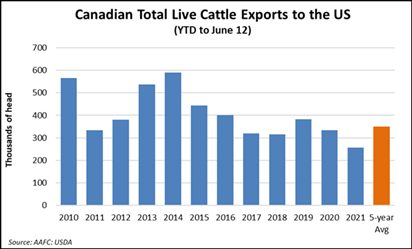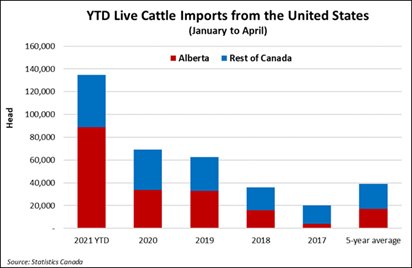
In 2020, live Canadian cattle exports were 669,670 head, down 7% from 2019 and 6% lower than the 5-year average. Canadian live cattle exports to the U.S. have been trending lower, with 2020 being 46% lower than 2014. Feeder cattle exports for 2020 were down 36% from 2019 and 73% below 2014.
Slaughter capacity
Weekly federally inspected Canadian cattle slaughter capacity is approximately 66,860 head. In the west, federally inspected cattle slaughter capacity is just over 51,000 head or 76% of Canadian capacity.
The national federally inspected beef plant utilization rate was 92% in 2019. Western Canada federally inspected cattle slaughter plants had an average utilization rate of 93.4% in 2019. For 2020, the western Canada utilization rate averaged 89.6%, including 6 weeks in April and May when weekly utilization rates were below 70% due to COVID-19 plant disruptions.
Removing the 6-week disruption period increases the utilization rate for western Canada beef slaughter plants to 96.3% in 2020. The utilization rates indicate plants are running near capacity and significantly higher than the 5-year average of 83%.
Cattle imports
‘The demand for cattle has turned Canada into a net importer of feeder cattle in recent years,’ explains Wood. ‘For the January to April 2021 period, 134,660 head have been imported from the U.S., an increase of 95% from 2020 and more than double 2019. Alberta cattle imports from the U.S. are 88,870 head for the January to April period, an increase of 165% from 2019.’
In 2021, Alberta cattle imports accounted for 66% of total Canadian cattle imports, compared to an average of 44% over the last 5 years. For the January to April 2021 period, Canada’s net cattle imports are about 100,000 head, up significantly from a year ago.
Image 2. Live cattle imports from the United States

Source : alberta